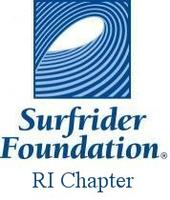The Surfrider Foundation is a non-profit, grassroots environemental organization dedicated to protecting and preserving our world's oceans, waves and beaches. Our Foundation is made up of over 50,000 activists and 64 chapters across the United States and Puerto Rico, along with international affiliates in Japan, Europe, Australia and Brazil. For more information on the Surfrider Foundation, or to find out how to become a member, simply log on to www.surfrider.org.
Beach access information is plentiful and there is greater than one access site per mile of coastline. The surfing areas in Rhode Island are generally in good shape. A comprehensive inventory of shoreline structures would be useful. The state should continue to work to limit the proliferation of shoreline structures, which now cover 25% of the shoreline in Narragansett Bay.
In April 2005 the Rhode Island Chapter held their third annual Earth Day Beach Cleanup and Computer Recycling program. The group collected 18,000 pounds of trash off three local beaches and recycled 37,000 pounds of computers, the second largest such recycling effort in the state's history. The Chapter's Beachscape Program took a giant stride forward in 2003 with a survey of the State's southern beaches from Westerly to Newport.
According to Surfer Magazine's The Surf Report and the Rhode Island chapter of Surfrider Foundation, there are 33 well-known surf spots in the state. The best-known surf spots are predominantly rocky bottom reef breaks or point breaks found along the rocky shoreline. A few beach breaks are also popular in the summer. The majority of the reef breaks are located along the rocky shore at low-use access points, while the beach breaks are at well-known public access points, like state beaches. To accommodate the summer crowds, RIDEM approved surfing on a trial basis at three state beaches, Scarborough, East Matunuck, and Misquamicut, between June and August of 2001.
The Surfrider Rhode Island Chapter scored a major victory when the Newport City Council voted unanimously in January 2001 to remove "surfing prohibited in certain areas" from the city statutes. A few months prior to that the Newport Cliff Walk Commission had met to discuss the possibility of posting signage along the Cliff Walk prohibiting many recreational activities including surfing, from the Cliff Walk. The Commission was entertaining this idea based on the above statute. Area surfers and access warriors voiced concern, voiced opinions, researched information, attended meetings, and pulled together to show that there is power in numbers and in teamwork.
Surfing area conditions are quite good in Rhode Island. This can largely be attributed to the low to medium residential density, and lack of major industry along the southern shores. The biggest concerns affecting the quality of surf spots are the accumulation of trash, decreasing water quality, and access to coastal breaks.
